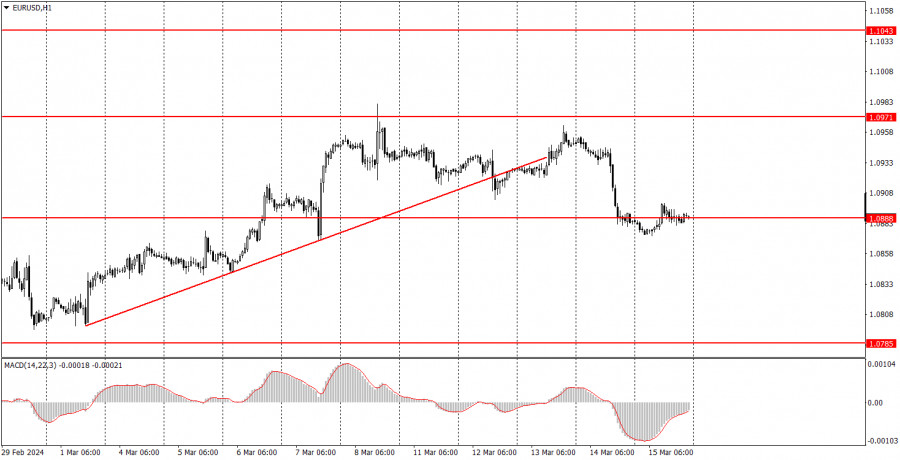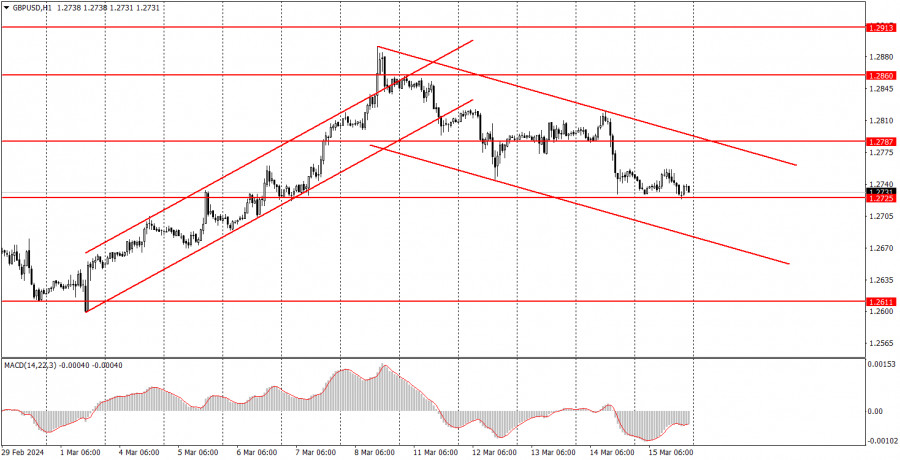

There are hardly any macroeconomic events planned for Monday. We will only highlight the Eurozone Consumer Price Index, but we don't expect a strong market reaction since this is the second estimate of this report. The reason is that second estimates rarely differ from the first ones. However, if Monday turns out to be an exception, we may see some minor movement in the euro. There are no important reports scheduled in Germany, the United Kingdom, or the United States.
Analysis of fundamental events:
The only fundamental event planned for today is European Central Bank Governing Council member Claudia Buch's speech. However, as we have mentioned before, we don't expect significant or new information from ECB representatives at this time. The ECB meeting already took place, and Christine Lagarde provided all the necessary and relevant information to the market. The recent series of speeches by ECB officials did not attract any interest from the market. Therefore, it is unlikely that Buch will be able to provide traders with new and important information.
General conclusion:Today, we expect both instruments to continue their respective downward movements, but we also anticipate low volatility. Both currency pairs may extend their downward movement based solely on technical analysis, but if the instrument only moves by 20-30 pips, it will be difficult to expect profits. We can only expect strong trading signals and opportunities to make profit when volatility is at a moderate or high level.
Basic rules of a trading system:1) Signal strength is determined by the time taken for its formation (either a bounce or level breach). A shorter formation time indicates a stronger signal.
2) If two or more trades around a certain level are initiated based on false signals, subsequent signals from that level should be disregarded.
3) In a flat market, any currency pair can produce multiple false signals or none at all. In any case, the flat trend is not the best condition for trading.
4) Trading activities are confined between the onset of the European session and mid-way through the U.S. session, after which all open trades should be manually closed.
5) On the 30-minute timeframe, trades based on MACD signals are only advisable amidst substantial volatility and an established trend, confirmed either by a trendline or trend channel.
6) If two levels lie closely together (ranging from 5 to 15 pips apart), they should be considered as a support or resistance zone.
How to read charts:Support and Resistance price levels can serve as targets when buying or selling. You can place Take Profit levels near them.
Red lines represent channels or trend lines, depicting the current market trend and indicating the preferable trading direction.
The MACD(14,22,3) indicator, encompassing both the histogram and signal line, acts as an auxiliary tool and can also be used as a signal source.
Significant speeches and reports (always noted in the news calendar) can profoundly influence the price dynamics. Hence, trading during their release calls for heightened caution. It may be reasonable to exit the market to prevent abrupt price reversals against the prevailing trend.
Beginners should always remember that not every trade will yield profit. Establishing a clear strategy coupled with sound money management is the cornerstone of sustained trading success.